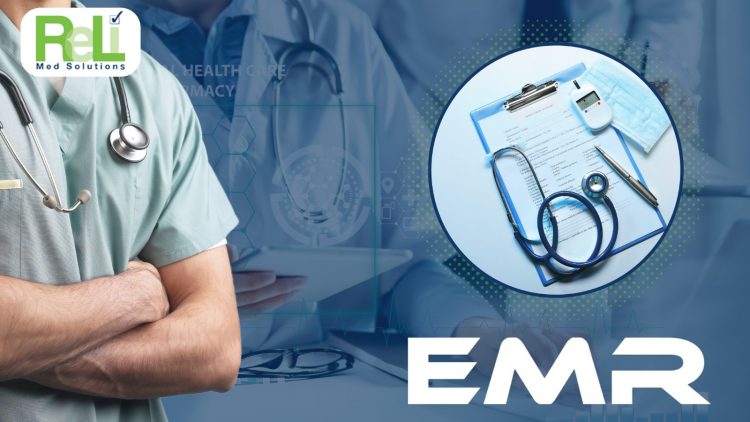The Ultimate Checklist for EMR Software Implementation for Physicians
In today’s fast-paced health care environment, EMR Software Implementation is essential for doctors. It helps organize patient data, reduces paperwork, and speeds up work processes. However, setting up EMR software can be challenging and requires proper planning. To make the process smoother and ensure better practice management, having a simple checklist is crucial. This helps doctors stay on track, reduce errors, and streamline the entire implementation, ultimately improving the efficiency and effectiveness of the practice. A well-thought-out plan ensures a smooth transition to the new system.
Why Do Physicians Need a Checklist for EMR Software Implementation?
Doctors are very busy, and any delay can affect their patient care. If you don’t have a plan for EMR Software Implementation, it can cause confusion, delays, and mistakes. A checklist is like a step-by-step guide that helps make sure you do everything right. It also makes sure that things like RCM , which handles billing and payments, are set up correctly to avoid money problems.
But what happens without a checklist? You might miss important steps like staff training or moving patient records to the new system. Because of that, the software may not work well, and it could cause problems for your team and patients. A checklist helps you stay on track, save time, and keep your patients happy.
What Should Physicians Include in Their Checklist?
Making a checklist is very important for smooth EMR Software Implementation. If you follow these steps, the process will be easier
-
Set Clear Goals: Decide what you want the EMR software to do. Do you want to make patient records more accurate or save time on paperwork? Clear goals will help you see how well the software is working. These goals should match tools, which improve patient care.
-
Budget Planning: Plan how much money you can spend. Don’t forget to include the cost of software, training, and equipment upgrades. If you don’t plan well, money issues might come up later. Also, include costs for services like Medical Billing Services to keep billing smooth.
-
Vendor Research: Pick a vendor who offers secure, customizable, and user-friendly EMR solutions. Because every practice has different needs, the vendor should provide the right tools for you. They should also make sure Medical Records are easy to access and safe.
-
Staff Training: Train your team to use the software well. If they don’t know how to use it, mistakes can happen. Training should also teach how to use tools to make managing the practice easier.
-
Data Migration: Move all patient records to the new system carefully. But make sure you don’t lose or damage any information. This step is very important for keeping records correct.
-
Compliance Check: Check if the software follows all rules and laws, like HIPAA compliance. If it doesn’t, there could be legal problems later. Following these rules keeps sensitive data safe.
-
Testing Phase: Test the software with a small group before using it fully. Because of that, you can find and fix problems early. Testing also makes sure systems like Medical Billing Services work properly with the EHR.
- Ongoing Support: Plan for help after the software is set up. If problems come up later, having support will save time and keep your practice running smoothly. Support is also helpful for managing tools like EHR and billing systems.
Common Mistakes to Avoid During EMR Implementation
Even with a checklist, mistakes can still happen. But knowing these common mistakes can help you avoid them. First, not training your staff properly is a big mistake. If your team doesn’t understand the software, they might not use it right, especially tools like RCM. Another mistake is ignoring customization. Every practice is different, so it’s important to choose software that can be adjusted to manage things like medical records. Sometimes, costs can be higher than expected.
If you don’t plan for all expenses, like those for medical billing services, it can cause problems. Rushing the process is also a mistake. Skipping steps like testing can lead to errors, especially with tools like EHR. Lastly, not telling your patients about the new system can confuse them. Make sure to explain how their medical records will be better managed with the new system.
Simplify EMR Implementation with ReLi Med Solutions
If you need a reliable EMR provider, ReLi Med Solutions can help. We offer cloud-based, customizable EMR systems that work for both small and big practices. Because we know the challenges in health care, our solutions are simple and easy to use. They also include tools like RCM and Medical Billing Services, making your work easier. Our software is HIPAA-compliant and comes with a team to help you at every step. So, you can focus on caring for patients while we handle the technical details. With ReLi Med Solutions, your EMR Software Implementation will be smooth and worry-free.
Conclusion
Setting up EMR software is a big step in improving how your practice works. If you use a checklist, you can avoid mistakes and make the process simple. Because this affects your team and patients, planning is very important. Adding tools like EHR, Medical Billing Services, and RCM will make your practice run even better. With the right partner, like ReLi Med Solutions, you can improve patient care and make your practice more organized. So, take the first step today toward a better and more digital future. Because of that, your practice will grow, and your patients will be happy with the care they get.

